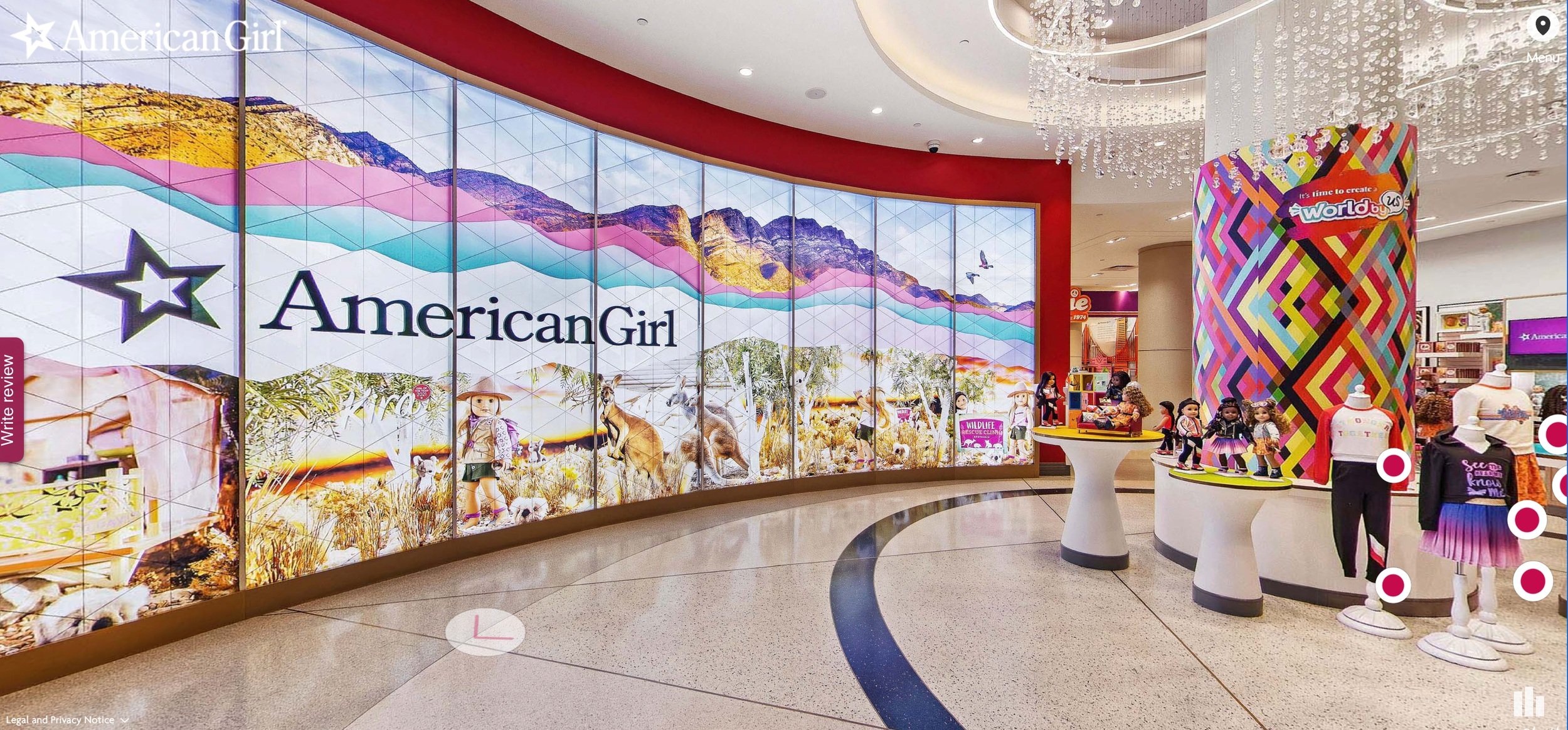Why iCommerce (Immersive Commerce) is the Logical Evolution of eCommerce
The world of eCommerce has come a long way since the very first online transactions. Shopping online via Amazon or a host of other websites has become almost a weekly and for some a daily occurrence. Shopping online is faster and in most cases less expensive than jumping in your car to go shopping. In fact, with gas prices what they are right now, there is even more reason not to jump in your car (unless you have gone electric, then maybe!). And very often when you order something online, it is delivered within a few days if not the next day. Very convenient.
Our current e-commerce model though is basically flat and static. It is based on information being consumed rather than experienced. For the most part we end up clicking through endless pages of product descriptions without ever seeing or connecting, emotionally.
The next iteration of online shopping, Immersive Commerce promises to actually make the process more fun via a more immersive experience. From my standpoint, I am all for it, as long as it stays simple.
So What is Immersive Commerce?
iCommerce or Immersive Commerce experiences are supposedly the future of shopping. By 2035, it is estimated that 80% of consumer shopping activity will happen online. By then the “Metaverse” should have come into some form of reality offering an expanded and enhanced version of the real world, reflecting the same trends we see IRW (In Real World).
Technology concepts such as 3D imaging and augmented reality (AR) that may have once seemed futuristic, is in fact more commonplace than ever. Whereas virtual-reality simulations that require specialized software and headsets remain a decidedly niche market, AR and 3D are much more popular. Recent technology advances are behind the growth in usage, with both iOS and Android devices accommodating 3D and AR content that can be displayed directly within a web browser. While most AR content is available in the form of games such as Pokémon Go or photo “lenses” for Snapchat, wider visibility is on the immediate horizon: Google intends to integrate AR content into search results, and Facebook is piloting AR ad campaigns with leading brands.
A Better Customer Experience Translates Into Higher Sales
The customer experience has never been more important for brands involved in ecommerce as they fight to differentiate themselves from their competitors. The inability to size, hold, and buy items prior to purchase has long been a crucial gap in the online shopping experience, and with more customers now relying heavily on the internet for making purchases, bridging that gap is essential. Immersive commerce provides a viable solution: 3D assets enable shoppers to rotate and flip product images and zoom in to examine details such as materials, detailing, and product features , while AR enables shoppers to virtually try items in real-world context, giving them accurate size and fit information.
Brands will continue to move toward immersive commerce because this type of user experience adds value. Imagine if you could walk around an entire showroom floor where items are tagged with prices, size charts, reviews, detailed info, on-demand explainer & testimonial videos and multiple angles from which to view each item available instantaneously. Then imagine how this could help to increase actual sales and conversions.
Shoppers recognize the potential value of these tools, with 57% saying they want help visualizing how products would look in their environments, and a quarter seeking tools to virtually try on new makeup or clothing style. Not only do 3D and AR assets help shoppers evaluate products more accurately, they help spotlight product details and features to their fullest advantage. Immersive commerce tools support upsells, and drive increased order sizes. Furniture retailer CB2 found that product pages featuring 3D and AR experiences drove 21% higher revenue per visit and a 13% lift in average order size.
Reaching Gen Z With Immersion and the Metaverse
Younger customers having grown up in a digital age, are expecting and demanding of these immersive experiences. With Web3 and the Metaverse in the process of being built, it will be imperative that brands be very conscious of the underlying changes that are becoming part of the lexicon of Gen Zers, 60% of who already think brands should be selling their products on metaverse platforms. Digitally native millennials and Gen Zers who grew up interacting with videogames, e-sports and social media expect to be able to shop on any online platform they visit. Consumer demand for interactive online experiences skyrocketed during the pandemic, including entertainment, gaming, fitness and shopping.
Forward Thinking Brands Are Already Testing Web3 & Immersive Marketing
Brands that embrace new tech to offer immersive virtual commerce experiences will be able dramatically differentiate themselves from competitors who are not as savvy and will find themselves enjoying a competitive edge that will translate to more and higher sales. It is why we are already seeing the likes of Nike and Adidas jumping into Web3 and the Metaverse with dramatic sales results. It’s crucial though for brands to maintain their core branding, values and image as they expand into the metaverse, and across any and all immersive virtual experiences they create. Many brands actually just see virtual stores as simply another extension of their physical store presence, but creating a truly unique immersive experience is the key to success in this new omnichannel paradigm. This can include gamification, live streaming, virtual try-ons and other immersive experiences that engage customers and increase sales. Immersive experiences represent another tool in a brands marketing toolbox to engage with its customers. In this virtual future, creativity will be at the core of being successful. Immersive is an interface or experience that will increasingly be how consumers interact with products and brands. This doesn’t imply it will replace or displace other ways to engage with consumers, but it will offer brands additional avenues to engage their customers. Online store environments personalized for shoppers in real-time that feel even more sensorially rich and immersive than physical store environments is the ultimate goal. Tech is already being developed that will allow for both touch and smell to be a part of the immersive experience. Companies are already building, and hosting branded, 3D virtual worlds on their own websites and these spaces will also live on metaverse platforms in the near future.
Augmented Reality (AR) and Virtual Reality (VR) Are Two Key Ingredients of iCommerce
Augmented reality (AR) and virtual reality (VR) have already brought the virtual shopping experience to life, allowing consumers to explore and browse virtual stores in much the same way they do physical stores. At the same time, faster 5G network speeds and improvements in mobile hardware and graphic rendering software now make immersive mobile interfaces possible. By creating visually unique virtual planets, islands, stores and more, forward-thinking brands are experimenting in a discovery-driven manner as to how they can present their products in ways they could never even fathom previously. For brands, having an exquisitely crafted presence in the new virtual world environment will be as important as having an e-commerce website today. As the world of e-commerce continues to evolve, consumers and brands will be able to engage in even more meaningful ways.
One of the leading Companies in Immersive Commerce is Obsess
Obsess is an experiential e-commerce platform that enables brands to create immersive 3D virtual stores on their websites and on metaverse platforms. and was recently selected to participate in the 2022 Disney Accelerator program.
Neha Singh a former Google software engineer, fashion design student, Vogue executive is the founder and CEO of Obsess. Combining her technology expertise with her passion for fashion, she has created an experiential e-commerce platform — effectively tossing the grid structure to the curb and replacing it with an immersive, 3D virtual environment that realistically replicates an actual store; one that is shoppable and enables online customers to experience the sights, sounds and camaraderie of in-real-life shopping.
Recent traffic, engagement and conversion data collected by Obsess show that brands as diverse as American Girl, Charlotte Tilbury, even NBCUniversal and theSkimm - are reaping the benefits.
Photo compliments of American Girl Place
As an example, not everyone can travel to New York City to experience the American Girl flagship store. Well, actually now they can - virtually. American Girl Place is a series of experiences embedded in the brand’s website that allow consumers anywhere in the world to explore the brand’s stores, interact and shop from their computers or mobile devices.
“This is about increasing the ROI on your retail real estate because now so many more people can visit the store even if they can’t make it to New York City,” says Singh. “All the effort that the virtual merchandising teams are putting in is now being experienced by a much broader audience.”
Wrap-up
iCommerce is in its infancy, but promises to eventually totally upend the eCommerce experience as we know it today. Interested to chat about the latest innovations in producing video content for iCommerce? Contact us today!



